If there is one thing women in Delhi take seriously, it is their attire. Nowhere else in the country will you see women of every age so focussed on dressing at their best whatever the occasion or time of the day.
Be it a wedding, a kitty party, a business lunch, a religious gathering, just a shopping spree or a parent-teacher meeting at their child’s school, women in this city believe in dressing up.
As a city known for its zest for life and an understanding of the finest in traditions, it is no wonder that heritage Indian textiles, weaves and handicrafts are special to every fashionable woman from the Capital.
Delhi based designer Gautam Gupta of the Asha Gautam label explains, “Each handloom and handicraft is, of course, unique to a specific region of the country. Its evolution depends on the climate, geography and social practices of that region. Handlooms are a repository of aesthetic sensibility and, it is for this reason that textile connoisseurs love these fabrics. Delhi ladies, who have a keen eye for style, love handcrafted fabrics that are complex weaves, give a rich look and are produced with great skill.”
Gautam’s foray into design is rooted in the label started by his mother, Asha Gupta, more than two decades ago to cater to discerning women who understood and appreciated the beautiful fabrics available in the country. Building on the huge heritage of Indian handlooms, crafts and needlework, the mother-son duo began showcasing the intricacy and exquisite nature of India’s rich textiles.
After his education at the National Institute of Fashion Technology (NIFT), Gautam joined hands with his mother to give a fresh yet young perspective and make the traditional weaves and embroideries more desirable for fashion enthusiasts.
He says, “Since I spent my childhood in old Delhi, I was always in awe of its old-world charm. I would watch my mother (Asha) create silhouettes inspired by the royal style of dressing of society women of her generation and what they would wear for family celebrations and wedding. As a result, our brand’s language evolved organically to reflect the culture, regality and beauty of ethnic attire.”
Gautam adds that education at NIFT gave him a deeprooted knowledge and love of both the beautiful Indian textiles and contemporary fashion. It helped him in bringing about a fusion of modern styling with a touch of Indian textiles and weaves.
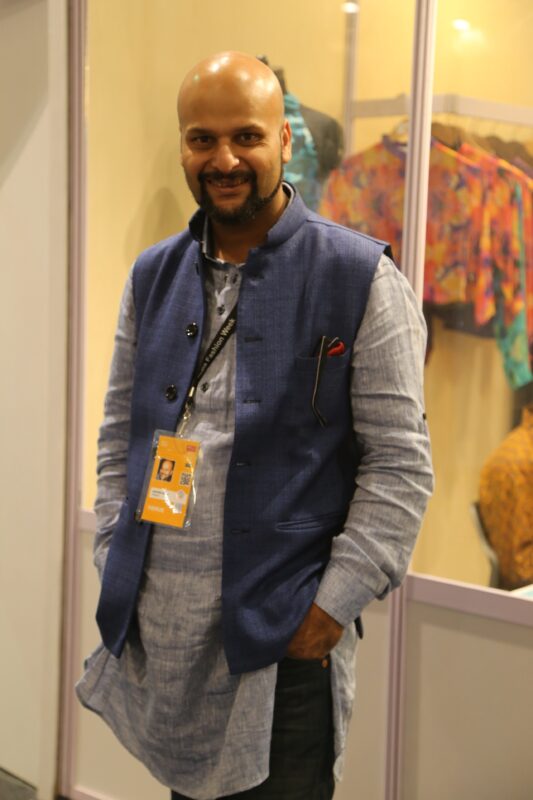
Thinking beyond the boundaries of existing fashion, they have travelled to remote parts of the country, like Paithan, Bhuj, Pochampally, and Uppada, among others, to rediscover weaves that had been lost in obscurity by reviving, renewing it, and giving them new life.
Gautam says, “We understood that our clients appreciate the artistic beauty and intricacy and timeless quality of these ancient weaves. We endeavoured to work with handlooms and handcraft techniques as much as possible to keep these alive and encourage the new generation to wear these fabrics to keep them relevant.”
A majority of Gautam’s clients are from Delhi and NCR, giving him a keen insight into what women here love to wear. Rajasthan, for instance, offers the brightest colours that help in countering its barren desert landscape.
The bright hues of the textiles of this region such as Kota Doria are a great favourite with women in the north, he says as he gives us a peek into the favourite handloom textiles and handwork that is the preferred choice of the ladies of the Capital.
He says, “Delhi is the cultural hub of the country. We get to see a lot of textiles from across the country being worn and accepted with alacrity here.”
A few of the most loved handloom crafts from across the country that are proudly draped by the women in Delhi, according to him, are:
- PASHMINA SHAWLS
A winter favourite, Pashmina shawl is made of Kashmiri goat hair which is very soft and luxurious. It comes in various colours and patterns and is a very precious possession for those who own it. It is warm, cosy and soft. The Pashmina shawls are timeless, priced at a premium and are usually passed down as heirlooms.
- CHANDERI
Chanderi is a sheer handmade fabric from Madhya Pradesh. Because of its sheerness, it goes well with delicate-looking dresses, sarees, and dupattas. Chanderi fabric is usually a blend of treated cotton and silk that give it a lustrous and sheer look and makes it look comfortable. It is the perfect wear in summer for formal occasions.
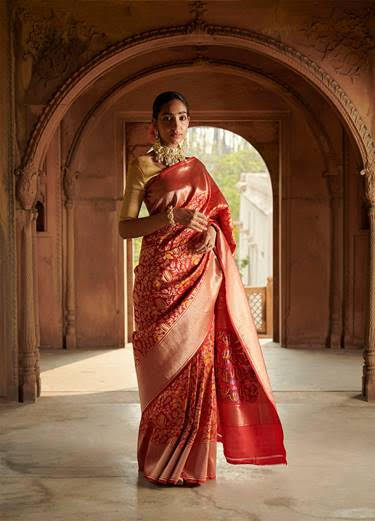
- BANARASI
Banarasi brocades are extremely popular at Delhi weddings. The garments, made with silk, zari and sometimes zari fused with cotton threads are fashioned into lehengas, sarees, salwar suits and even western pant-suits. Banarasi sarees, stoles, and dupattas are popular off-loom garments. Fabric rolls can be used to make more variations in silhouettes. This is an age-old handwoven craft from the famous city of Varanasi.
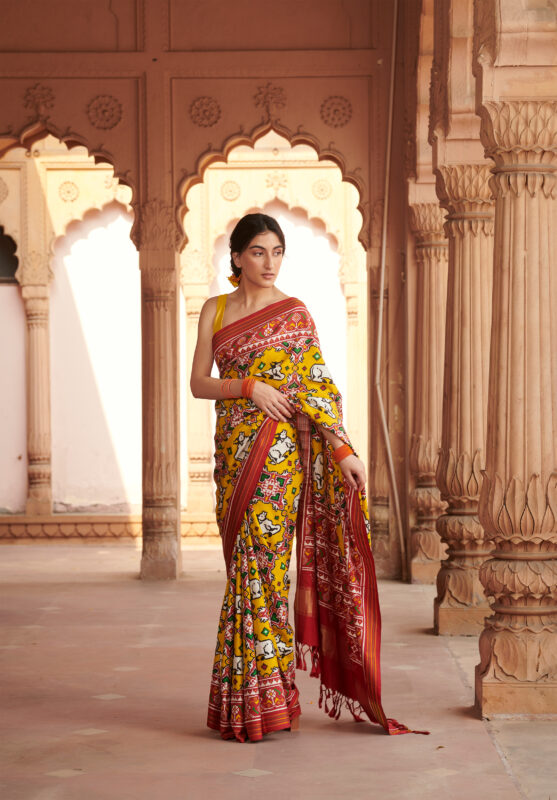
- PATOLA
Patola, also known as double ikat, is a famous highly coveted craft from Gujarat and Andhra Pradesh. Designs are made by dyeing the yarns, pre-weaving involves a lot of calculations and precise dyeing of yarns. It can take six months to a year to weave a Patola saree, and therefore it is considered a prized possession.
- PAITHANI
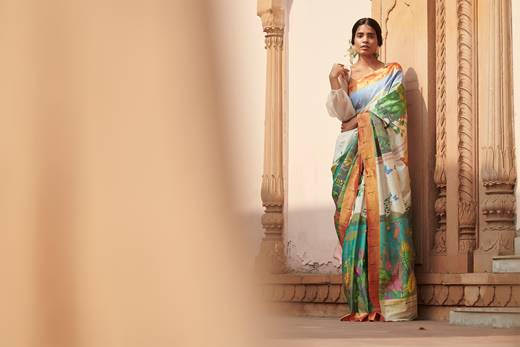
Paithani is a type of silk saree that originated in the town of Paithan in Maharashtra. It is cherished for its ability to weave complex designs and vibrant colours due to its tapestry weaving technique. Paithani sarees are handwoven using pure silk and zari threads and usually feature motifs inspired by nature and surroundings. Paithani saree is considered a status symbol — exuding elegance and opulence. It is worn on very special occasions and is usually passed down generations as a heirloom piece.
- KOTA DORIA
Kota Doria is primarily made in Kota, Rajasthan. It consists of cotton and silk yarns that form a checked pattern known as khat. Kota Doria is admired for its light weight, sheer texture and strength. It is ideal for making sarees, salwar kameez, lehengas and other outfits that are comfortable in warm and humid weather.
- KANJIVARAM
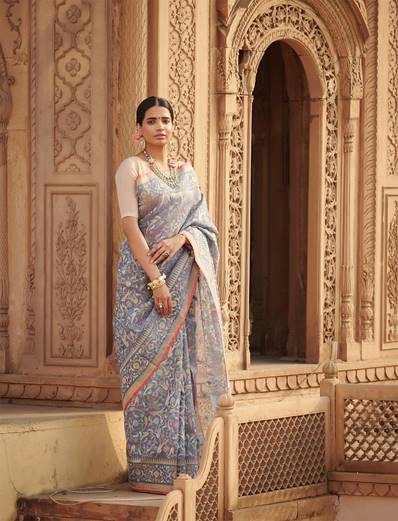
This is a traditional silk saree from Kanchipuram town in Tamil Nadu. It is woven in pure mulberry silk and gold-silver zari. It is known for its bright lustre, sheen, grandeur and elegance. It is a perfect choice for weddings as it exudes richness.
- UPPADA
Uppada silk saree originated in the Uppada village of Andhra Pradesh. These sarees are popular for their light weight, soft texture and intricate designs and muted shine. Uppada sarees are woven using the traditional Jamdani technique, which involves interweaving cotton and silk threads to create motifs on the fabric. Uppada sarees are popular among women who prefer elegant and comfortable attire.
- JAMDANI
Jamdani is a fine cotton fabric from Bengal — mostly used to make sarees. It is one of the finest muslins in which motifs are carefully woven on the loom. Earlier, only for royalty — now jamdani has found its way into the elite wardrobes for its comfort, light weight and delicateness.
- KHADI SILK
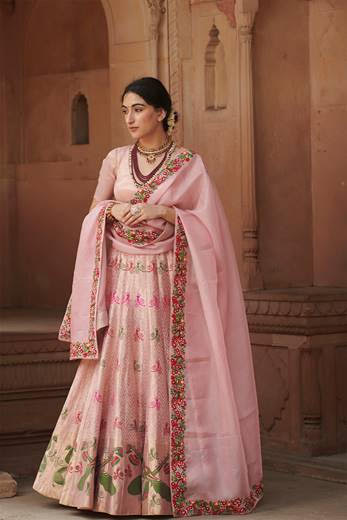
Khadi silk is a type of fabric that is hand-spun and hand-woven from natural fibres such as cotton, silk, or wool. Khadi silk is known for its versatility, durability, and comfort. It can be used to make various garments such as kurtas, sarees, jackets, and stoles.
Gautam rounds off by saying that there will hardly be a Delhi fashionista who will not boast of this list of must-haves in her wardrobe. Just in case you are missing a couple, do stock up!





